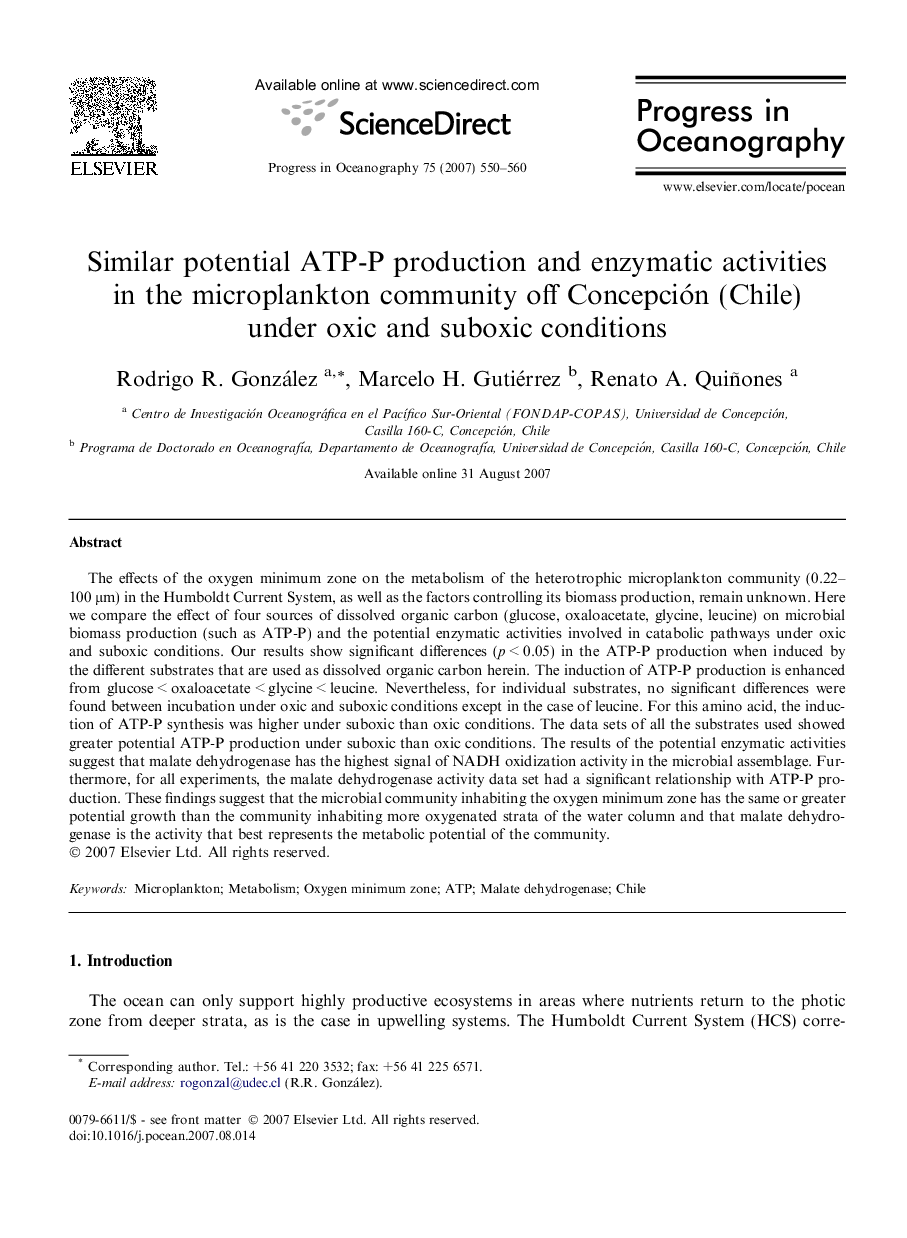| Article ID | Journal | Published Year | Pages | File Type |
|---|---|---|---|---|
| 4553801 | Progress in Oceanography | 2007 | 11 Pages |
The effects of the oxygen minimum zone on the metabolism of the heterotrophic microplankton community (0.22–100 μm) in the Humboldt Current System, as well as the factors controlling its biomass production, remain unknown. Here we compare the effect of four sources of dissolved organic carbon (glucose, oxaloacetate, glycine, leucine) on microbial biomass production (such as ATP-P) and the potential enzymatic activities involved in catabolic pathways under oxic and suboxic conditions. Our results show significant differences (p < 0.05) in the ATP-P production when induced by the different substrates that are used as dissolved organic carbon herein. The induction of ATP-P production is enhanced from glucose < oxaloacetate < glycine < leucine. Nevertheless, for individual substrates, no significant differences were found between incubation under oxic and suboxic conditions except in the case of leucine. For this amino acid, the induction of ATP-P synthesis was higher under suboxic than oxic conditions. The data sets of all the substrates used showed greater potential ATP-P production under suboxic than oxic conditions. The results of the potential enzymatic activities suggest that malate dehydrogenase has the highest signal of NADH oxidization activity in the microbial assemblage. Furthermore, for all experiments, the malate dehydrogenase activity data set had a significant relationship with ATP-P production. These findings suggest that the microbial community inhabiting the oxygen minimum zone has the same or greater potential growth than the community inhabiting more oxygenated strata of the water column and that malate dehydrogenase is the activity that best represents the metabolic potential of the community.
